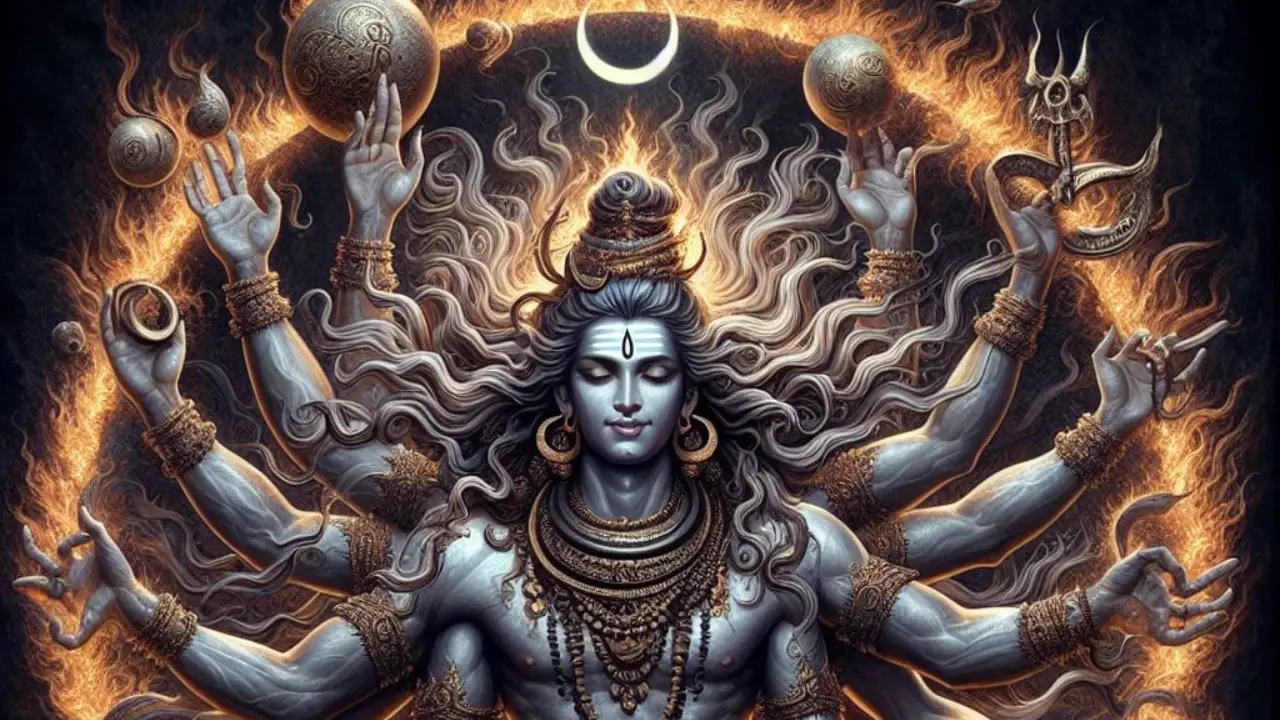In the ethereal realm of Hindu mythology, amidst the grand tapestry of gods and goddesses, one figure stands out with mesmerizing grace and power: Lord Shiva as Nataraja, the King of Dance. This captivating tale intertwines cosmic significance with artistic expression, weaving a narrative that transcends time itself.
The Divine Dancer: Lord Shiva as Nataraja
In the heart of Hinduism, Lord Shiva reigns supreme as one of the principal deities. He embodies the paradoxical nature of creation and destruction. Yet, it is in his form as Nataraja, the cosmic dancer, where his divine essence finds its most captivating expression.
The Cosmic Dance of Creation and Destruction
Legend has it that Lord Shiva, in his Nataraja form, performs the Tandava. It is the dance that symbolizes the cosmic cycles of creation and destruction. With each movement of his graceful limbs, galaxies are born, stars collapse, and worlds are reborn anew.
The Iconography of Nataraja
Central to the depiction of Nataraja is the cosmic dance itself, captured in intricate detail. Lord Shiva is often depicted with four arms, each symbolizing different aspects of existence: creation, preservation, destruction, and grace. His matted locks whirl around him, symbolizing the untamed forces of nature. Beneath his feet lies Apasmara, the demon of ignorance, signifying the triumph of knowledge over ignorance.
The Symbolism of Nataraja’s Dance
In delving deeper into the symbolism of Nataraja’s dance, we uncover layers of meaning that offer profound insights into the nature of existence. Each aspect of his divine choreography carries with it a rich tapestry of symbolism:
The Drum (Damaru): Held in one of Nataraja’s hands, the drum symbolizes the primordial sound of creation, known as the “Om.” Its rhythmic beat echoes throughout the universe, giving birth to galaxies and sustaining the cosmic dance.
The Fire (Agni): Flames engulfing Nataraja represent the transformative power of destruction and regeneration. They signify the burning away of the old to make way for the new, the eternal cycle of death and rebirth that permeates all existence.
The Crescent Moon (Chandra): Adorning Nataraja’s matted hair, the crescent moon represents the passage of time and the cyclical nature of life. Just as the moon waxes and wanes, so too do the fortunes of mortals rise and fall in the cosmic dance of existence.
The Serpent (Naga): Wrapped around Nataraja’s neck, the serpent symbolizes the primal energy of Kundalini. It is the dormant spiritual energy believed to reside within all beings. Its coiled form represents the potential for enlightenment and awakening.
The Gesture of Abhaya Mudra: One of Nataraja’s hands is raised in the gesture of Abhaya Mudra, which signifies protection and fearlessness. It reminds us that even amidst the chaos of existence, there is a place of refuge and safety within the embrace of the divine.
Nataraja in Art and Culture
The timeless allure of Nataraja transcends geographical and cultural boundaries, inspiring artists and thinkers across the globe. From ancient temple sculptures in India to contemporary dance performances in the West, the image of Lord Shiva as the cosmic dancer continues to captivate and resonate with audiences worldwide.
Temple Sculptures: The ancient temples of South India are adorned with exquisite sculptures of Nataraja, depicting his divine dance in intricate detail. These sculptures not only serve as religious icons but also as masterpieces of artistic expression. They showcase the skill and craftsmanship of ancient artisans.
Bharatanatyam: In the classical dance tradition of Bharatanatyam, Nataraja holds a revered place as the ultimate embodiment of grace and beauty. Dancers pay homage to him through intricate footwork, graceful movements, and emotive expressions. They seek to channel the divine energy of the cosmic dancer.
Western Interpretations: In the Western world, Nataraja has captured the imagination of artists, scholars, and philosophers alike. Western culture has reimagined and reinterpreted the image of the cosmic dancer, from the poetry of T.S. Eliot to the paintings of Frida Kahlo.
The Philosophy of Nataraja
At its core, the philosophy of Nataraja is one of unity and interconnectedness. His dance reminds us of the interconnectedness and interdependence of all things in the universe. They are bound together by the eternal rhythms of creation and destruction. Embracing this philosophy helps us recognize our place within the cosmic dance and our inherent connection to all that exists.
Nataraja in Today’s World
In an age marked by rapid technological advancement and social upheaval, the story of Nataraja holds profound relevance. In a world filled with division and discord, his dance serves as a powerful symbol of unity and harmony. It reminds us of the interconnectedness of all life and the need for compassion and understanding.
Unlocking the Mysteries of Nataraja
The story of Lord Shiva as Nataraja invites us to delve deeper into the mysteries of existence. It prompts us to ponder the nature of reality and our place within it. As we contemplate the divine dance of creation and destruction, it reminds us of our own role in the eternal cosmic drama.
Embracing the Dance of Life
In conclusion, the tale of Lord Shiva as Nataraja is more than just a myth. It is a timeless allegory that speaks to the very essence of existence. As we navigate the complexities of life, let us remember the cosmic dance of Nataraja. It will help us find solace in the knowledge that we are but fleeting participants in the grandeur of creation.
What are your thoughts on the legend of Lord Shiva as Nataraja? Share your insights and reflections in the comments below.

